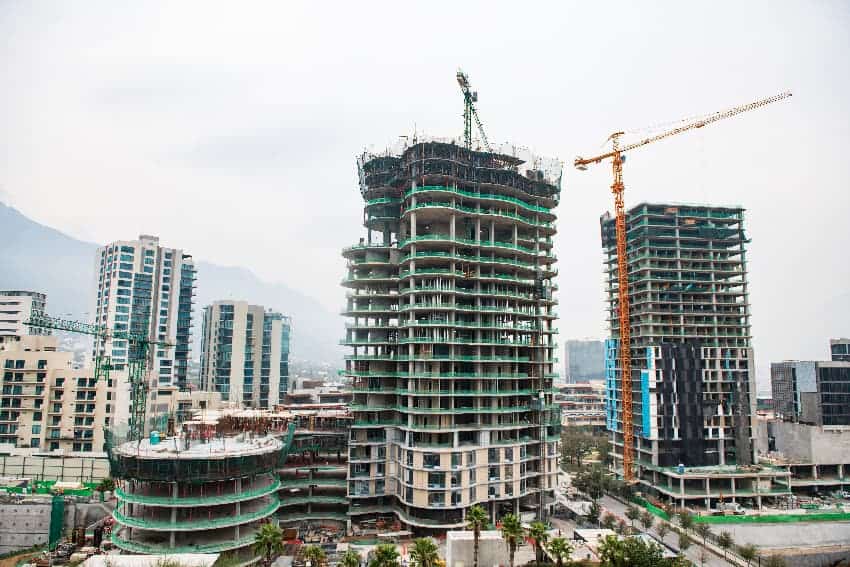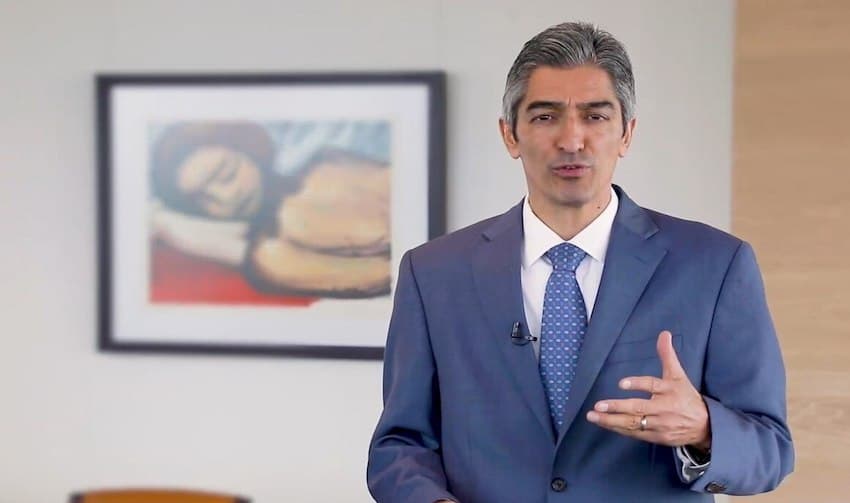There is no shortage of talk about the opportunity Mexico has to benefit from nearshoring.
Mexico is already positioned to profit from the growing desire of companies to move away from countries such as China and set up operations closer to their main market – the United States. Numerous foreign companies have recently announced plans to establish a presence here or expand their existing operations, while foreign direct investment (FDI) hit a record high of over US $29 billion in the first half of 2023.

But some observers believe that Mexico runs the risk of missing its nearshoring opportunity, or at least not taking full advantage of it, for a variety of reasons, even though its proximity to the United States and its preferential trade status in North America thanks to the USMCA free trade agreement gives it a distinct advantage over other countries in the region that are also seeking to attract additional foreign investment.
A small group of such people recently identified factors they believe are hindering greater inflows of FDI and suggested ways in which the situation can be remedied. They expressed their views in response to questions put to them by the Inter-American Dialogue, a Washington D.C.-based think tank that primarily focuses on affairs related to the Western Hemisphere.
The think tank pointed out that investors committed US $225 billion to Latin American and Caribbean countries last year, but Mexico only secured 17% of that amount despite accounting for nearly a quarter of the region’s economic activity. It asked four experts why Mexico is “lagging behind” in attracting FDI and what factors would make the country more attractive in the “nearshoring trend.”
What’s holding Mexico back?
The ex-ambassador’s view:
Arturo Sarukhan, a member of the Inter-American Dialogue board and Mexico’s ambassador to the United States between 2007 and 2013, directs blame at the current federal government, which began its six-year term in late 2018.
Considering its geographical location and longstanding trade and economic integration with the United States, among other factors, Mexico “could be poised to singularly reap the benefits of a strategic sea-change and a once-in-a-generation opportunity,” Sarukhan said.
However, “the reality” is that Mexico is “unable to fully capitalize” because of the current policies of President López Obrador, he said.

Sarukhan, who was ambassador during the government of AMLO’s nemesis Felipe Calderón, said that the concept of nearshoring is “increasingly being re-tweaked” in Washington as “ally-shoring or friend-shoring,” but he claimed that López Obrador “is behaving as anything but a friend or ally of the United States.”
In support of that view, the ex-ambassador cited AMLO’s position on “regional democracy and human rights,” his boycotting of the Summit of the Americas, “his posture on Russian aggression … [and] his habit of poking his finger in Biden’s eye at every opportunity.”
(Mexico condemned Russia’s invasion of Ukraine, but hasn’t imposed any sanctions on the aggressor. Sarukhan didn’t offer specific examples of how López Obrador has antagonized Biden, but Mexico is involved in USMCA-related disputes with the U.S., including ones over corn and energy policy.)
Sarukhan said that insecurity and “the growing shadow of organized crime” as well as López Obrador’s “energy and renewables policy paradigm” – in which state-owned firms are favored over foreign and private ones – are among other factors that are hindering FDI flows.
The analyst’s view:
Diego Marroquín Bitar, a senior research analyst in the global economy and development program at Washington D.C.-based think tank the Brookings Institution, said that Mexico has “solid macro fundamentals” and “unparalleled access” to the United States and Canadian markets thanks to the USMCA, the North American free trade pact that superseded NAFTA in 2020.

“However, geography and trade agreements alone fall short of fully harnessing the region’s FDI boom,” Marroquín said before citing four factors that “discourage further investment in the country.”
They were:
- Significant setbacks in clean energy generation. (Marroquín said that clean energy generation is 5% lower than in 2018)
- High levels of water scarcity.
- Violence.
- Rule of law issues (with several energy companies unable to operate due to permitting issues).
Marroquín also said that “deficient infrastructure … inflates costs relative to other nearshoring options (for example, Vietnam) and hampers market accessibility.”
He noted that Mexico ranks 66 out of 139 countries on the World Bank’s Logistics Performance Index.
The economist’s view:
Arnulfo Rodríguez, principal economist at BBVA Research, questioned whether Mexico has benefited from the nearshoring trend at all.
“Foreign direct investment flows into Mexico in 2022 explained by nearshoring appear to be just supported by anecdotal evidence. FDI data and the negligible market share gain of Mexico in the United States imports of manufactured goods since 2018 do not seem to back up the nearshoring story,” he said.

Rodríguez noted that FDI in 2022 was still below pre-pandemic levels “excluding the one-off investments of the Televisa-Univisión merger and Aeromexico’s restructuring” in the first half of last year.
He also noted that the majority of FDI last year was reinvestment of profits.
(That scenario was repeated in the first half of this year, with new investment contributing to just 7% of the FDI total, according to preliminary data from the Economy Ministry.)
Rodríguez said that Mexico has been unable to capitalize on an opportunity to gain a greater foothold in the United States market for imported goods.
Mexico “could not take advantage of the 5.5 percentage points lost by China in the aftermath of the pandemic and trade war with the United States. Indeed, Mexico just gained 0.4 percentage points between 2018 and 2022 while Vietnam and Taiwan won 2.3 and 1.2 percentage points, respectively,” he said.
(The value of Mexico’s exports – most of which go to the U.S. – increased 3.8% annually in the first eight months of the year, and Mexico is now its northern neighbor’s largest trade partner.)
The academic’s view:
Lucinda Vargas, an economics professor at New Mexico State University and associate director of its Center for Border Economic Development, took a much more positive view of Mexico’s performance in attracting foreign investment.
She noted that investment in Mexico’s maquiladora industry reached a record high of US $14 billion last year, and said that was “chiefly the result of the nearshoring impetus.”
Vargas argued that “the dynamics of foreign direct investment in Mexico are best analyzed by looking at the performance of its maquiladora export manufacturing industry.”

“This industry,” she added “has two characteristics that are especially conducive to growth in the context of nearshoring: maquiladoras are largely located in Mexico’s northern border right next to the United States, and … [the sector’s] top foreign direct investor is the United States, the world’s largest consumer market.”
What does Mexico need to change to attract more investment?
Arturo Sarukhan:
The former ambassador believes that Mexico’s next president and government need to make significant policy changes in order for the country to seize the nearshoring opportunity.
“Regardless of who wins in 2024, a U-turn is urgently needed if Mexico City is serious about tapping into this potential,” Sarukhan said.
Diego Marroquín:
Marroquín asserted that “Mexico’s first female president, whether it is Morena party candidate Claudia Sheinbaum or Broad Front for Mexico candidate Xóchitl Gálvez, must confront the challenges he identified “head-on if they wish to transform Mexico’s current FDI stream into an FDI tsunami.”
“Without immediate action on energy, security, infrastructure, rule of law and water management, Mexico will once again become the land of (missed) opportunities and fall short of its true potential,” he said.
Arnulfo Rodríguez:
Rodríguez expressed a similar view to that put forward by Marroquín.
“To be more attractive for nearshoring opportunities and reap more economic benefits in the medium term, Mexico needs a strong rule of law along with industrial, energy and fiscal policies that promote a new wave of investments associated with electric vehicles, renewable energy and IT equipment,” he said.
Lucinda Vargas:
Vargas indicated that she believes Mexico is already in a good position to attract additional foreign investment. Mexico’s FDI growth in recent years (investment grew in 2021 and 2022 after a pandemic-induced decline in 2020) is due to “a combination of its entrenched maquiladora industry, its next-door proximity to the United States and nearshoring trends,” she said.
Those factors, Vargas added, “are likely to keep this investment growing into and past the 2024 election.”
What is President López Obrador’s view?
Despite criticisms about some government policies, AMLO has frequently described investment conditions in Mexico as “unbeatable.”
“Mexico is among the countries … with the most advantages for foreign investment because it has a trade agreement that allows what is produced in Mexico to be exported to the United States and Canada [tariff-free]. That’s why a lot of investment is arriving and the forecast is that Mexico is going to grow a lot more than other countries,” he said in March.
Speaking at his morning press conference on Wednesday, López Obrador attributed the record high FDI in the first half of the year to the impact of the USMCA, which took effect during his second full year in office.
“Our adversaries think that the transfer of companies to Mexico began developing naturally, that it was a spontaneous thing. No, it had to do with the [free trade] agreement that was reaffirmed in the times of President Trump. It was work we did, it wasn’t easy,” he said.
After data showing FDI growth was released last year, López Obrador said that “foreign investment arrives when there is an authentic rule of law, when there is stability, when there is governability, when there is honesty.”
He has also cited “healthy public finances” and the autonomy of the central bank as factors that have attracted investors and touted the “competitive advantages” of doing business in Mexico, among which are affordable labor costs, the presence of a large educated workforce and proximity to the United States.
Mexico News Daily
